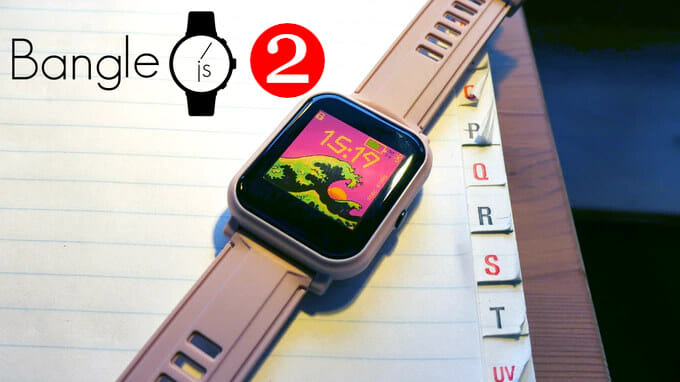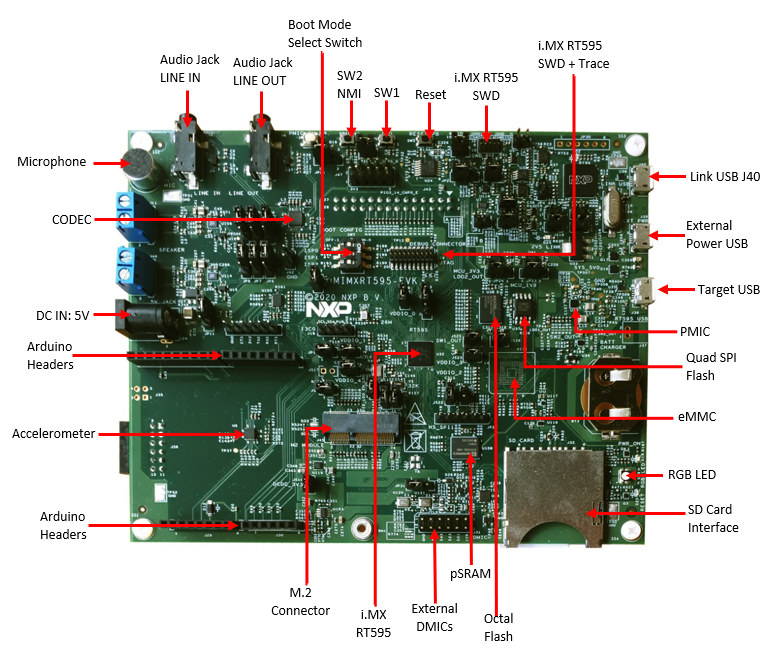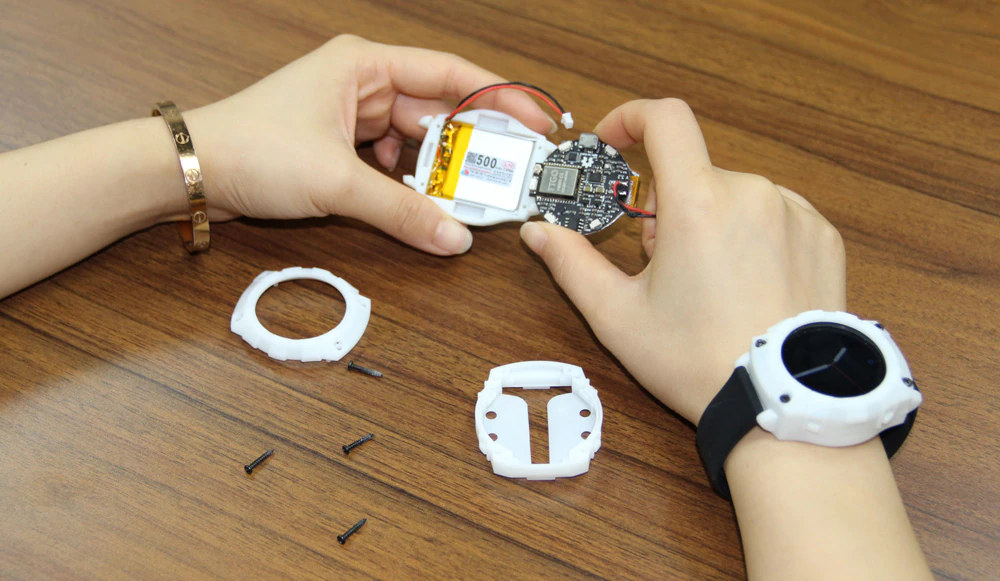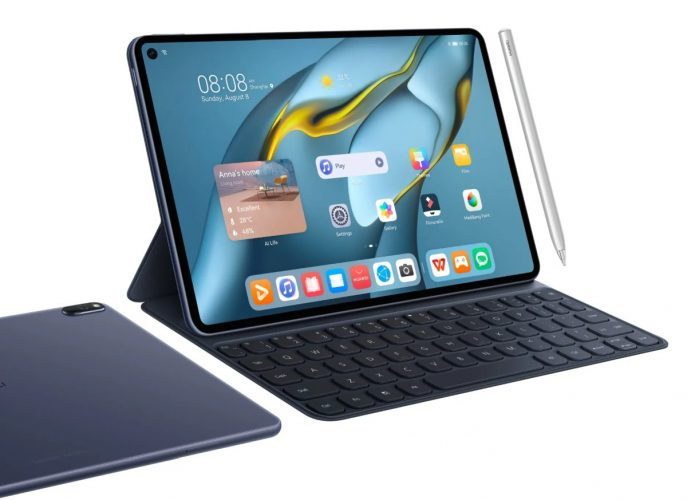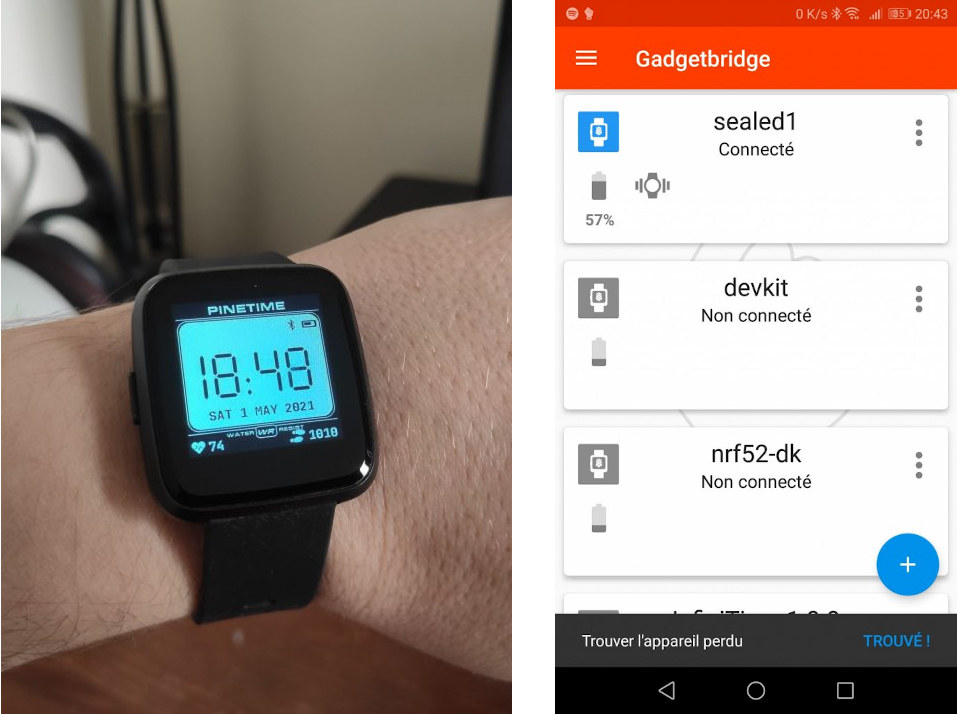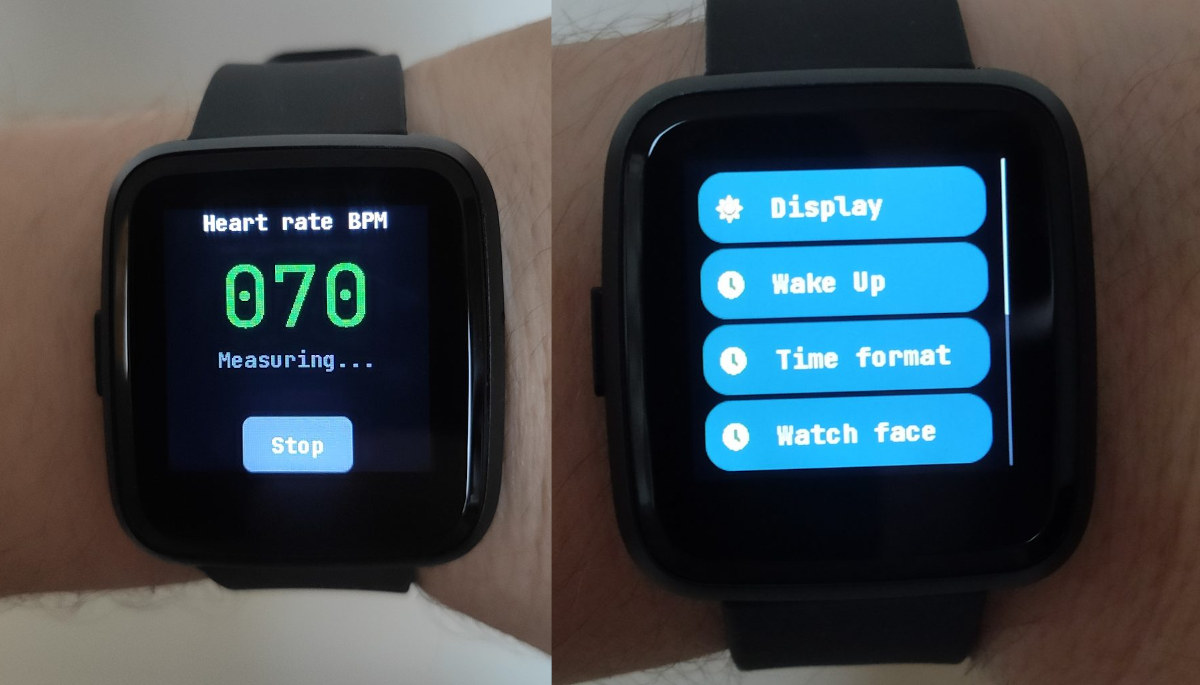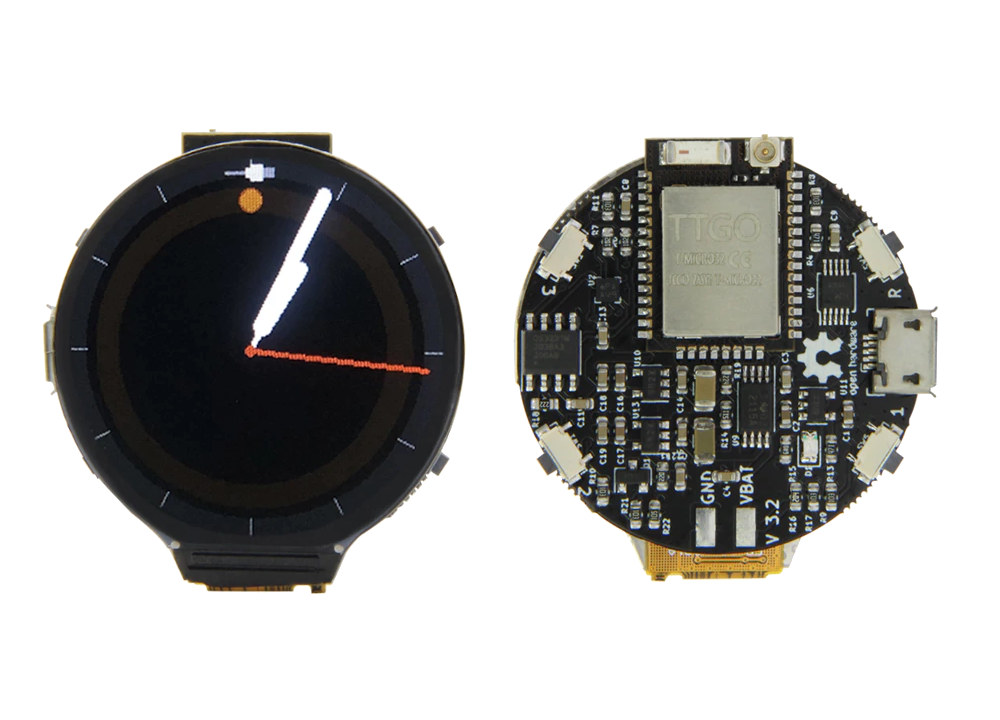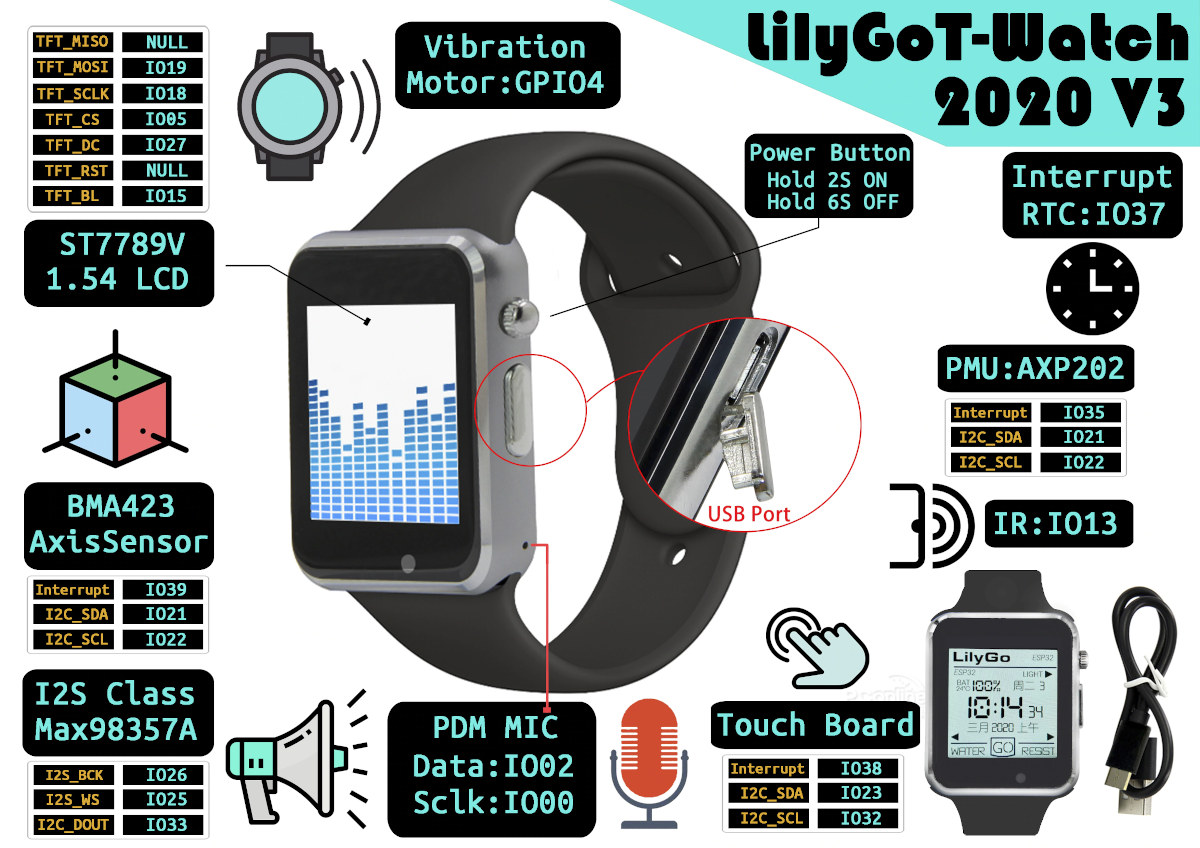The Bangle.js 2 is an upgraded, improved version of the Bangle.js hackable, JavaScript smartwatch based on NordicSemi nRF52832 SoC that was introduced in 2019 with ESPruino open-source firmware. The new watch comes with a new rectangular design, a Nordic Semi nRF52840 SoC that offers four times the RAM, twice the on-chip and external flash, plus an always-on sunlight-readable screen with full touchscreen support, and improved Bluetooth signal strength. Bangle.js 2 specifications: MCU – Nordic Semi nRF52840 Arm Cortex-M4 MCU @ 64MHz with Bluetooth LE, 256kB RAM, 1MB on-chip flash Storage – 8MB flash Display – 1.3-inch 176×176 always-on 3-bit color LCD display (LPM013M126) with backlight, full touchscreen Connectivity Bluetooth 5.0 LE with advertising, central and peripheral mode support GPS/Glonass receiver Sensors Heart rate monitor 3-axis accelerometer, 3-axis magnetometer Air pressure/temperature sensor Misc – Vibration motor Debugging/Programming – Full SWD debug port on the rear of the watch Battery – 200mAh […]
NXP i.MX RT500 Cortex-M33 Crossover MCU integrates DSP, 2D GPU for wearables and IoT devices
NXP i.MX RT500 is the second Cortex-M33 Crossover MCU following the NXP i.MX RT600 Series announced in 2018, and optimized for low-power HMI applications such as wearables and Smart Home & IoT devices. NXP Crossover MCUs are typically clocked at 600 MHz or more, but NXP i.MX RT500 Cortex-M33 is limited to 200 MHz, and combined with 200 MHz Tensilica Fusion F1 DSP as well as a 2D GPU, and power optimizations that enable long battery life of up to 40 days on a charge for wearables like smartwatches. NXP i.MX RT500 key features and specifications: MCU Core – Cortex-M33 @ up to 200 MHz with Arm TrustZone, M33 built-in Memory Protection Unit (MPU), PowerQuad hardware accelerator for DSP functions, CASPER crypto coprocessor for asymmetric cryptographic algorithms DSP Core – Cadence Tensilica Fusion F1 DSP @ up to 200 MHz On-Chip Memory Up to 5 MB of system SRAM accessible […]
T-Watch 2021 ESP32 round smartwatch features ESP32 SoC, touchscreen, 500mAh battery
Back in May, LilyGo started selling “Paul’s 3D Things” Open-Smartwatch open-source hardware ESP32 watch as a kit with the board and a round display, but no case, wristband, or battery, although now a smartwatch kit, but still without battery, is available for around $30. The company has now designed the T-Watch 2021 which builds upon the Open-Smartwatch but adds features like a touchscreen display, a vibration motor, a magnetometer, and ships as a devkit with board and display or a complete smartwatch kit including a 500mAh battery. T-Watch 2021 specifications: Wireless module – LILYGO T-micro32 module based on ESP32-PICO-D4 module with dual-core ESP32 processor, 4MB FLASH, 2MB PSRAM, ceramic antenna and u.FL antenna connector Connectivity – Bluetooth 4.2 BR/EDR BLE and WiFi 4 2.4GHz 802.11 b/g/n Display – 1.3-inch circular touchscreen LCD with 240×240 resolution (Model GC9A01) USB – Micro USB for charging and programming Sensors 3-axis BMA423 accelerator, pedometer […]
HarmonyOS launched on Huawei MatePad tablets, Watch 3 smartwatches
Huawei plans for an Android alternative called HongMeng (鸿蒙) OS were leaked in 2019 following tensions with the US government that prevented them from working with American and other companies around the world. The operating system was later called HarmonyOS for the overseas markets, and Huawei released HarmonyOS 2.0 beta in September of last year, where we learned it was heavily inspired by Android, replacing Google GMS with Huawei’s own HMS, but using the same development tools. We also got a roadmap at the time with the company planning to launch HarmonyOS devices in 2021. Developers first got the HiSpark WiFi IoT RISC-V development board to play with the new OS in October 2020, but now the company has finally announced HarmonyOS consumer devices with three Huawei MatePad tablets, and two Huawei 3 watches. Huawei MatePad HamornyOS tablets Three models have been introduced with a mix of Kirin and Snapdragon […]
Why you should request open-source software for your IoT devices
I usually think of open-source hardware and/or software are enabling skilled people to more easily fix bugs, improve on the design, get feedback from the community, etc… But in a world where IoT devices become more prevalent, there’s another reason why you should request open-source software: Long term support. What made me think about are two things. The first one if that I own WeLoop Hey 3S smartwatch, which I love and wear since March 2018. That’s quite a feat since most cheap devices I own often only last a few months or a year or so. I’m also used to the watch face and Weloop app interface. So what’s the problem exactly? WeLoop company closed on December 31, 2019, and while the app worked fine for about a year after that, recently I have been unable to login to the app to access my data and/or update settings for […]
InfiniTime 1.0 firmware released for PineTime smartwatch
The PineTime smartwatch was unveiled and first launched in 2019, as a low-cost, open-source wearables development kit/platform for developers wanting to work on firmware development for the Nordic nRF52 powered device. Progress was made on various solutions such as ATCwatch Arduino firmware, and as time passed, the PineTime slowly became more like an “enthusiast-grade” end-user product. This is basically what it has become with the first stable release of InfiniTime firmware, which was selected as the default firmware in September 2020. The main features of InfiniTime 1.0 firmware include: Two clock faces – digital and analog Apps – Stopwatch, music control, navigation, heart rate, as well as Paddle and 2048 games User settings – Display timeout, time format, wake up conditions OTA upgrades via an open-source bootloader based on MCUBoot Heart rate monitoring and step counting Between 3 and 5 days of battery life depending on usage Firmware based on […]
LilyGo sells Open-Smartwatch open-source hardware ESP32 watch by “Paul’s 3D Things”
We’ve previously covered three variants of LilyGo T-Watch-2020 smartwatch based on ESP32 WiFi & Bluetooth SoC with TTGO T-Watch-2020 (V1) launched about a year ago, following by T-Watch-2020 V3 with a microphone for voice control, and T-Watch-2020 V2 with GPS. The company has recently launched a new rounded smartwatch based on ESP32-PICO-D4 SiP with a twist as they did not design it themselves and instead partnered with “Paul’s 3D Things” for the Open-Smartwatch, and just handle manufacturing and production. LilyGo Open-Smartwatch “Light Edition” specifications: Wireless module – LILYGO T-micro32 module based on ESP32-PICO-D4 module with dual-core ESP32 processor, 4MB FLASH, ceramic antenna or u.FL antenna connector Connectivity – Bluetooth 4.2 BR/EDR BLE and WiFi 4 2.4GHz 802.11 b/g/n Display – 1.3 inch circular LCD with 240×240 resolution USB – Micro USB for charging and programming Sensor – 3-axis BMA400 accelerator Debugging – USB to TTL via CH340E chip Misc -Reset […]
TTGO T-Watch-2020 V3 ESP32 watch adds microphone for voice control
Lilygo TTGO T-Watch-2020 is a thin, ESP32 smartwatch programmable with Arduino that was introduced last year. The WiFi and Bluetooth-connected watch is equipped with a 1.54-inch LCD capacitive touch screen, a Class-D amplifier, buzzer, accelerometer, RTC, and a battery. The watch is one of the top-selling devices on Lilygo’s Aliexpress store, and they must have had requirements for voice control, so the company has now launched TTGO T-Watch-2020 V3 based on the same design but adding a PDM microphone. As far as I can TTGO T-Watch-2020 V3 specifications are the same as last year’s model, except for the microphone: SoC – Espressif ESP32 dual-core wireless processor with 520KB SRAM System Memory – 8MB PSRAM Storage – 16MB QSPI flash Display – 1.54-inch LCD capacitive touch screen Audio – Max98357 Class-D amplifier, buzzer/speaker, PDM microphone Connectivity – 802.11b/g/n WiFi 4 and Bluetooth 4.x/5.1 via ESP32 Sensors – BMA423 three-axis accelerometer with […]


